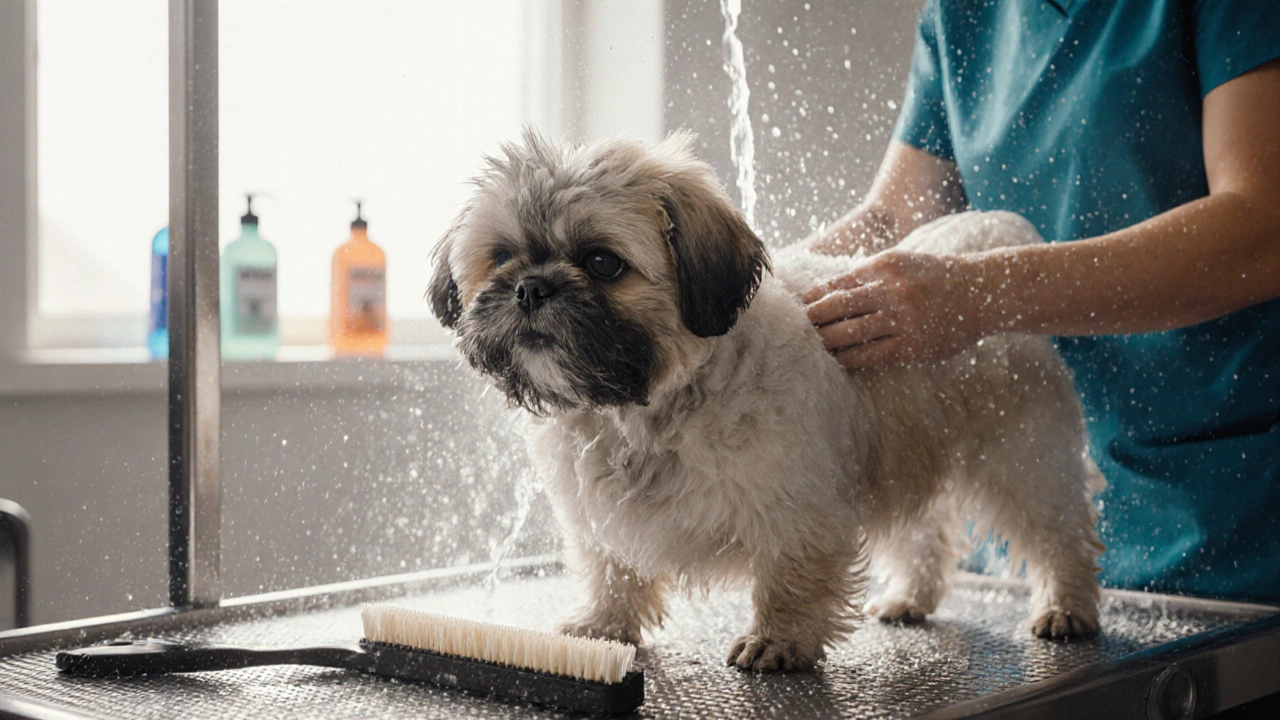Dog Groomer Steps: What Happens During a Professional Grooming Session
When you take your dog to a professional dog groomer, a trained professional who cleans, trims, and cares for a dog’s coat, skin, and nails. Also known as a pet stylist, a dog groomer does more than make your pup look nice—they help prevent health issues like matting, skin infections, and overgrown nails. It’s not just a bath and a brush. There’s a real sequence of steps, each designed to keep your dog safe, comfortable, and healthy.
Most professional dog grooming process, a series of standardized procedures used to clean and maintain a dog’s appearance and hygiene starts with a full health check. The groomer looks for lumps, rashes, ticks, or signs of ear infection before touching a single hair. Then comes the brush-out—this isn’t just for looks. Removing tangles and loose fur prevents painful mats that can pull on the skin. After that, the bath: using dog-specific shampoo, not human products, because human shampoos can dry out a dog’s skin. The water temperature, drying method, and product choice all matter. A bad dry can lead to hot spots; a wrong shampoo can cause itching for days.
Next up: the haircut. This part varies wildly by breed. A Poodle’s clip isn’t the same as a Golden Retriever’s trim. Groomers use different dog grooming tools, specialized equipment like clippers, scissors, and slicker brushes designed for canine coats depending on coat type. Clippers with different blade sizes handle thick fur, while hand scissoring shapes the face and feet. Nails get trimmed—carefully—because cutting too close to the quick hurts and bleeds. Ears are cleaned, and anal glands might be expressed if needed. Some groomers even brush teeth or add a little cologne, but the real goal is hygiene, not perfume.
Why does this matter? Regular grooming isn’t vanity—it’s prevention. Matted fur traps moisture and bacteria. Overgrown nails change how a dog walks, stressing joints. Dirty ears lead to infections. And if your dog hates grooming? That’s why many groomers use dog grooming frequency, the recommended number of professional sessions per year based on breed, coat, and lifestyle to space out visits and reduce stress. Some dogs need it every 4 weeks. Others, every 3 months. Knowing your dog’s needs helps you pick the right schedule.
What you’ll find below are real, practical posts that break down each step of the grooming journey—from how often to go, to what tools professionals actually use, to how much to tip after the session. No fluff. Just clear, honest info from owners and groomers who’ve been there. Whether you’re thinking about taking your dog to a shop for the first time, or you’re trying to understand why your pup came home looking different, these posts have the answers you need.
Do Dog Groomers Wash or Cut First? The Right Order for a Safe, Clean Groom
Dog groomers always wash before cutting because it's safer, more effective, and healthier for your dog. Dirty fur hides skin issues, clogs clippers, and leads to uneven cuts. Washing first ensures a clean, precise groom.
